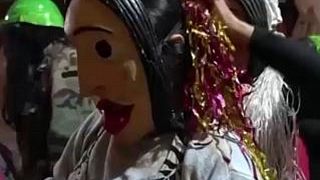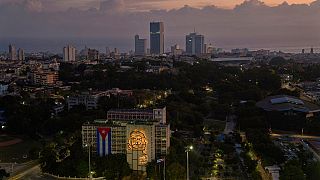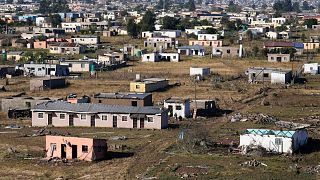Cuba
Few Cubans celebrate the Catholic holy week, but for the practitioners of Santería, every Friday is holy and requires a ritual.
As the crisis stretches, Cubans seek solutions in Santería, the fastest-growing religion in the socialist island.
While nearly 70% of Latin America's 670 million people consider themselves Catholic, in Cuba, Santería is the name of the game.
Santería – a fusion of African folk religions and Catholicism – was one of the few religious practices to endure quietly amid decades of prohibitions and stigma by the communist government.
Now, as that stigma has slipped away and the country enters a moment of compounding economic, political and migratory crises with no end in sight, the religion has grown in popularity and expanded to new demographics it previously did not reach.
Santería was born as a form of resistance among black communities on the island.
The religion dates back centuries to when Spanish colonists brought hundreds of thousands of enslaved Africans to the island.
Enslaved people would practice their religion secretly, attaching their deities to Catholic saints.
On one Friday, in the home of Mandy Arrazcaeta and his family, a group of friends donning African beads splay out offerings to the orixas (saints), shaking a wooden maraca and singing in the Yoruba language.
Millions worldwide are estimated to practice Santería, though definitive numbers are hard to pin down due to the informal nature of the religion.
Following the Cuban revolution in the 1950's, the government of Fidel Castro dismantled many religious structures and expelled priests and religious leaders.
Meanwhile, Santería practitioners pulled from the tools they used to survive for centuries - worshipping in small groups and at family homes.
It endured because of the religion's flexible nature, said Katrin Hansing, an anthropologist in Cuba focused on race at City University New York.
Many were also drawn to it because of it's perceived utility.
"It's incredibly resilient as a religious system, and it kind of makes due with what it has," said Hansing.
"It's so decentralized, and it allows the individual believer or practitioner to make it what they need it to be for them in that moment."
Now, as Cuba grapples with a stretching economic crisis, deepening political discontent and a migratory flight from the island with no end in sight, Santería is once again seeing another boom on the island.
It has also expanded past historically poorer, black communities on the island.
Mandy Arrazcaeta, a white Cuban and member of the LGBTQ+ community born on the popular fringes of Havana, found refuge in the religion when he was only 12.
Once, an Evangelical Christian said he felt rejected by members of the community for being gay.
"I never fit in that religion," Arrazcaeta said. "I liked that my religion does not discriminate. You can leave when you want to and do what you want."
"A religion that used to be, you know, dominantly practiced by descendants of Africans or people of African descent has now become a multiracial religion in Cuba," said Hansing. "Santería has grown enormously."
But for each practitioner, Santería means something different.
Today, Arrazcaeta travels between Florida, where he works as an Uber driver, and Cuba.
Santería is a spiritual and community experience for him and many other believers.













02:20
In Brazil, knights and masked riders take to a football pitch for religious festival
01:21
Scorching heat challenges pilgrims at mount Arafat during sacred Hajj ritual
01:01
Egypt tells Greece sovereignty of Sinai monastery assured
01:13
Muslims from around the world begin annual pilgrimage to Mecca
02:00
Bill to ban headscarves in sport passed by French Senate
Go to video
Pope urges Christian Brothers to be mindful of challenges young people face